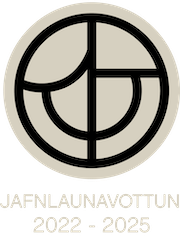Tíðni og stærð sprengigosa í kjölfar afjöklunar á Íslandi með sérstakri áherslu á aukna tíðni í Grímsvötnum á tímabilinu frá því fyrir 10,4-9,9 þús. árum (hið svokallaða Saksunarvatns gjóskulag) - verkefni lokið
Fréttatilkynning verkefnisstjóra
Saksunarvatns gjóskan, sem svo hefur verið nefnd, er gjóskulag sem á uppruna sinn í Grímsvötnum og myndaðist þar fyrir um 10,4-9,9 þúsund árum.
Lagið, sem fannst fyrst í stöðuvatninu Saksunarvatni í Færeyjum hefur verið mikið notað sem leiðarlag á öllu Norður-Atlantshafssvæðinu en þar hefur það fundist sem eitt lag (áætlað um 10,3 þúsund ára). Hins vegar benda nýlegar rannsóknir til þess að lagið sé myndað í nokkrum gosum í Grímsvötnum og því er erfitt að tengja gjóskukorn af þessum aldri með Grímsvatnasamsetningu við eitt stakt eldgos. Aldursmódel sem byggja á fundi gjóskunnar verða því að taka tillit til þess að gjóskan hefur myndast einhvern tímann á 500 ára tímabili á fyrri hluta nútíma. Gögnum var safnað um fundarstaði gjósku með Grímsvatnasamsetningu frá fyrri hluta nútíma, staðsetning þeirra var kortlögð og aldursgreiningum safnað saman til þess að fá betri yfirsýn yfir fjölda, þykkt og dreifingu gjóskulaga frá þessu tímabili (sjá Óladóttir og fl. Quaternary Geochronology, í yfirlestri). Það hefur fengist staðfest að sex gjóskulög hafa varðveist, fimm vestan Grímsvatna og eitt austan þeirra en þrátt fyrir að fjölda gjóskulaga með Grímsvatnasamsetningu hafi verið safnað bæði úr seti stöðuvatna og úr jarðvegssniðum, hefur reynst erfitt að greina endanlegan fjölda gjóskulaganna og/eða aldursgreina þau með vissu. Hins vegar var aðalefnasamsetning um 450 gjóskusýna frá fyrri hluta nútíma mæld og þau upprunagreind til að öðlast frekari innsýn í gostíðni virkustu eldstöðvakerfa landsins, Grímsvatna, Bárðarbungu, Heklu og Kötlu með áherslu á tímabilið fyrir 11-6 þúsund árum. Vinna við tengingu gjóskulaga milli staða er enn í gangi þrátt fyrir að styrktu verkefni sé nú lokið. Verkefnið hefur verið kynnt á erlendum og innlendum ráðstefnum fyrir hópa sérfræðinga og fyrir almenningi á innlendum vettvangi.
English:
The Saksunarvatn ash/tephra formed in the Grímsvötn volcanic system is a widely used marker horizon in the North-Atlantic region dated to the early Holocene (10.4 to 9.9 ka). It was originally identified in the Faroe Islands as a single layer but the tephra stratigraphy in Iceland shows more than one layer of similar age and chemical composition. This complicates the use of the layer as a marker horizon but nowadays good chemical fingerprinting is used to make correlations of a single tephra grain over 1000 km to individual tephra horizons. An invited review article on the findings and evolution of the use of the Saksunarvatn ash, now referred to as the G10ka series tephra, has been submitted to the journal Quaternary Geochronology. In this project we aimed at providing improved knowledge on the tephra in Iceland so that grains found within and outside of Iceland could be confidently correlated to the right volcanic event. Despite systematic field measurements in numerous places in Iceland information to confidently evaluate the total number of events forming the tephra, distribution of individual tephra events or their magnitudes are not yet available. Nevertheless, five G10ka tephra layers have been verified in the sector west of Grímsvötn volcanic system and one tephra layer in the sector to the east. Additionally, during this project numerous tephra layers (~450) have been analysed for major elements and the results contribute largely to improvements of knowledge on tephra fall frequency and estimates of eruption frequency of the most active volcanic systems in Iceland, Grímsvötn, Bárðarbunga, Hekla and Katla. The work on tephra correlation and tephra frequency is still ongoing although the funded project period is over. The project has been presented at both international and domestic conferences and domestically in Iceland for the general public.
A list of the project’s outputs:
Óladóttir BA, Thordarson Th, Geirsdóttir Á, Jóhannsdóttir GE, Mangerud J. In review. TheSaksunarvatn Ash and the G10ka series tephra. Review of current state of knowledge” Quaternary Geochronology. An invited review paper
Óladóttir BA, Thordarson Th, Larsen G, Guðmundsson MT. 2018. How complete is the explosive eruption history of Iceland and are the missing chapters important? Cities on volcanoes 10, Naples. Abstract# 1006.
BA, Thordarson Th, Geirdóttir Á. 2016. The 10ka Grímsvötn tephra series in Iceland (usually referred to as the Saksunarvatn ash). A review. Geophysical Research Abstracts, Vol. 18, EGU2016-9405, EGU General Assembly 2016.
Thordarson Th. 2014. The widespread ~10ka Saksunarvatn tephra is not a product single eruption. American Geophysical Union, Fall Meeting 2014. Abstract# V24B-04.
Óladóttir BA, Thordarson Th, Geirsdóttir Á. 2014. Vangaveltur um hið svokallaða Saksunarvatns gjóskulag. Vísindadagur VoN 25. Október 2014. Askja Náttúrufærðahús.
Manuscripts in preparation:
The Saksunarvatn ash and the G10ka series tephra in Iceland. To be submitted to Quaternary Geochronology Integrated early Holocene explosive eruption history of Iceland. To be submitted to Journal of Quaternary Science
Heiti
verkefnis: Tíðni og stærð sprengigosa í kjölfar afjöklunar á Íslandi með
sérstakri áherslu á aukna tíðni í Grímsvötnum á tímabilinu frá því fyrir
10,4-9,9 þús. árum (hið svokallaða Saksunarvatns gjóskulag) / Frequency
and magnitude of explosive eruptions following deglaciation in Iceland with
special emphasis on the multiple explosive eruptions at Grímsvötn (collectively
referred to as Saksunarvatn ash)
Verkefnisstjóri: Bergrún
Arna Óladóttir, Háskóla Íslands
Tegund styrks: Verkefnisstyrkur
Styrktímabil: 2014-2016
Fjárhæð styrks: 29,014
millj. kr. alls
Tilvísunarnúmer
Rannís: 141363


